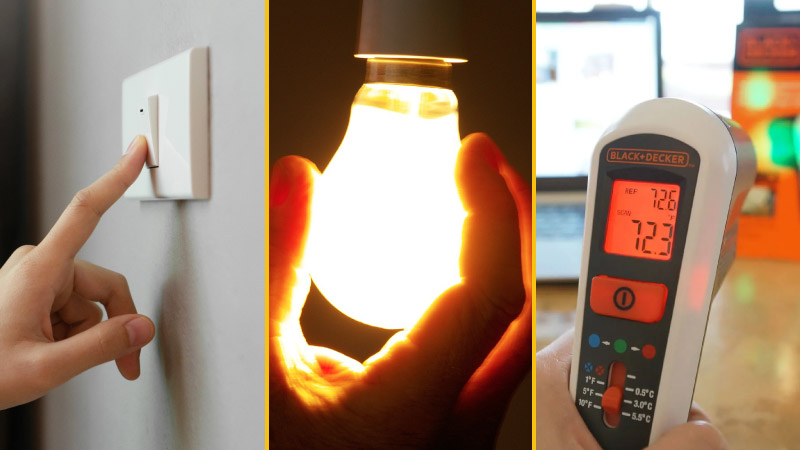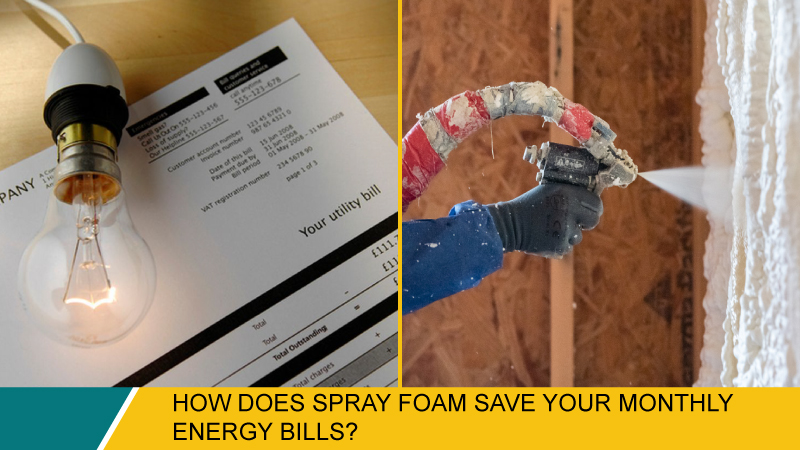What Kind of Savings on Energy Bills Could You Expect from Insulating Your Home?
Homeowners should contemplate how the investment will impact their future when deciding when to switch for spray foam insulation.
Spray foam insulation is excellent for your comfort and health for a variety of reasons, but have you ever thought about how superior it is for the savings account and how it can reduce your monthly energy bills.
Here are just a few explanations for how spray foam insulation can affect your savings for the rest of your life.
Most people would admit that insulation is advantageous for their health as well as their wallet.
Spray foam insulation typically requires little maintenance and is long-lasting.
If you don’t have enough insulation, you lose 35% of your heat through your walls.
One of the most energy-efficient insulation for attic air barriers is spray foam insulation.
Spray foam has an expansion capacity of up to 100 times their original size, filling every crevice in the attic.
Energy Saving Techniques with Spray Foam

It is funny how many people lament their high insulation energy costs because it’s so simple to lower them. By making a few little interactions, you can easily reduce your household’s energy consumption. The following recommendations will help you save energy right away around your house, and most of them are completely free.
Always unplug your appliances while not in use
When electronic equipment is turned off, they use staggering 75% less electricity than when they are on. By plugging in appliances when not being used or turning them off with a power board, you can reduce these “phantom loads” and save your energy use by 5 to 10%.
Use LED lights
Because they are so energy-efficient and durable, LED lights are growing in popularity. They consume a lot less power and will last 100 times greater than a regular light bulb.
Ensure the efficiency of your appliances.
Make careful to choose new appliances with a high energy rating system when making your purchase. Even while they could be a little more expensive, they can use about 20 and 50 per cent less energy than standard ones, which will quickly offset any additional costs.
Seal Openings
Air can enter the home through small cracks or openings present anywhere within the house. Your energy bills might decrease by up to 10% if you seal these up. Start by checking the windows and doors, which are common places where air leaks in, but if you’re serious, hire an energy auditor to inspect your house. Curtains that are closed lessen draughts as well.
Improve your home’s insulation
Over 50% of a household’s energy costs may be attributable to heating and cooling. You can control the temperature of your home more effectively and save a lot of money by improving the insulation in the walls, ceilings, floors, and roof.
Amongst all, spray foam insulation holds the best R-value and is one of the best insulation choices that ensure energy savings, home comfort, building tensile strength, less mould formation and dampness resistance.
Improve your home’s insulation
Over 50% of a household’s energy costs may be attributable to heating and cooling. You can control the temperature of your home more effectively and save a lot of money by improving the insulation in the walls, ceilings, floors, and roof.
Amongst all, spray foam insulation holds the best R-value and is one of the best insulation choices that ensure energy savings, home comfort, building tensile strength, less mould formation and dampness resistance.
Reduce your water usage.
Less hot water usage will lower the gas or electricity expense in addition to lowering your water bill. You can reduce your usage by taking shorter showers, only washing dishes and clothes when there is a full load, and generally being aware of it. Many energy-saving advantages can also be obtained from installing solar panels installed as well.
Advantages of spray foam insulation
Reduction in energy Savings: Investing money into spray foam insulation has been shown to significantly reduce monthly energy costs. Spray foam’s high R-value is a result of the way it fills in cracks and crevices where air tends to leak out. In actuality, spray foam insulation is 24 times less susceptible to air intrusion than conventional insulation. An increase in your home’s heating, ventilation, and air conditioning system’s efficiency can help you save energy a significant amount of money each month, and those savings add up quickly because an estimated 56 per cent of the energy used in a home is used for heating and cooling.
Lower Costs of Maintenance: Spray foam insulation is increasingly being used by households worldwide since it is long-lasting. Homes and businesses can use it for an infinite amount of time before having to consider updating it. Unlike older forms of insulation that need regular maintenance, spray foam insulation may maintain its superior efficiency for 20+ years, meaning you seldom have to bother about investing the money more cash into your insulation. The strong mould resistance of spray foam insulation also reduces house maintenance expenses. It resists water, prevents the general growth of mould, and is made of an inactive polymer that denies bacteria or other microorganisms a food source or a place to live.
Reduced Roof Repair Costs: Spray foam insulation can produce a “cool roof” effect if covered with a protective, reflecting coating. Lighter-coloured cool roofs are intended to reflect sunlight and maintain a cooler interior temperature than conventional roofs. Additionally, because spray foam insulation doesn’t need nails or metal fasteners, fewer thermal shorts and bridges—which may reach 180 degrees in the summer—are needed, which helps maintain cooler interior temperatures. This choice not only aids in lowering air conditioning expenditures, but it also safeguards the entire roof, increasing its lifespan and preventing the need for future roof repairs. Your roof may endure more than 50 years if it is properly insulated and maintained every 10 to 15 years.
What exactly is Home Insulation?
The best kind of insulation depends on the home and demands. There are many various types of insulation materials such as fibreglass, polystyrene, mineral wool, loose-fill, and rolls of batting.
Insulation slows down the flow of heat into the house in the summer and out of the home in the winter by trapping small pockets of air. The “R-value” of the insulation in summer determines how well it achieves this; the greater the number, the stronger the insulation is at preventing heat transfer, provided it’s installed properly.
Best Places to add insulation for Energy Savings
You will have the greatest idea of where to concentrate your insulation upgrades if you do an energy assessment of your house. Although it is safe to assume that the attic is where to start in the majority of homes again.
To safeguard the living areas below, you should add insulation in the gap around the wooden beams. Additionally, you should check the insulation levels in any exterior walls, which means walls separating the house from unheated areas such as an underground garage, and floors beneath unheated areas.
Sealing draughts from your dryer vent, fireplace, window and door frames, and other places is also essential.
Conclusion
Hence, for the majority of homeowners in the UK, improving a home with insufficient insulation is quite well worth the cost. It is an improvement that will save money on energy bills and increase the value of your home, plus it has the added advantage of lowering greenhouse gas emissions. Carefully consider your options for insulation and design a plan that will provide you with a home that is adequately insulated and sealed.


